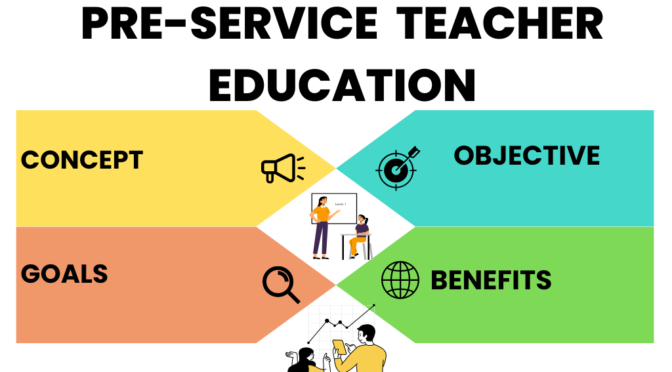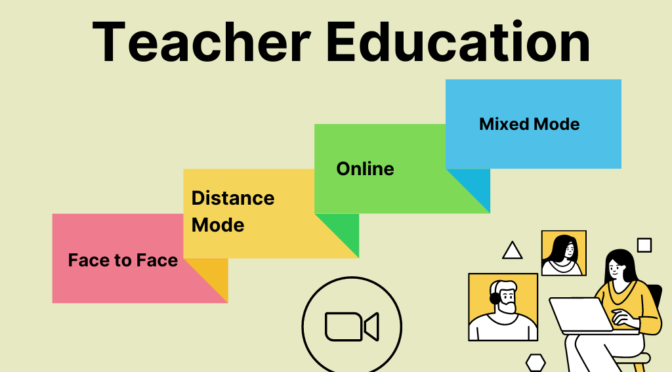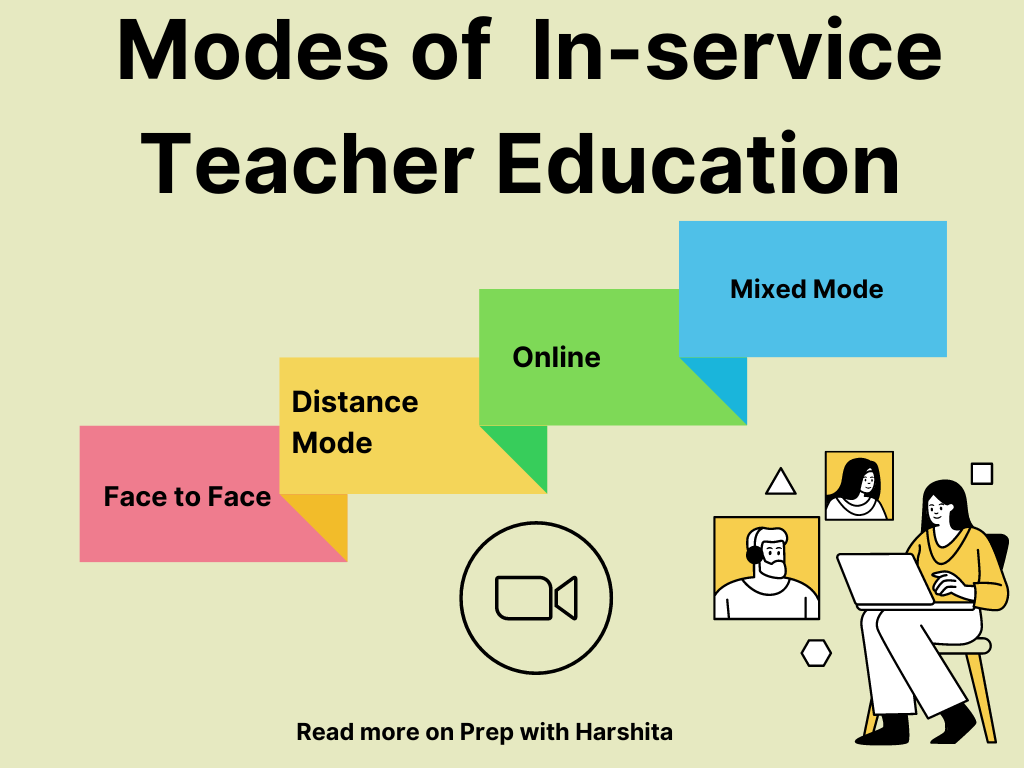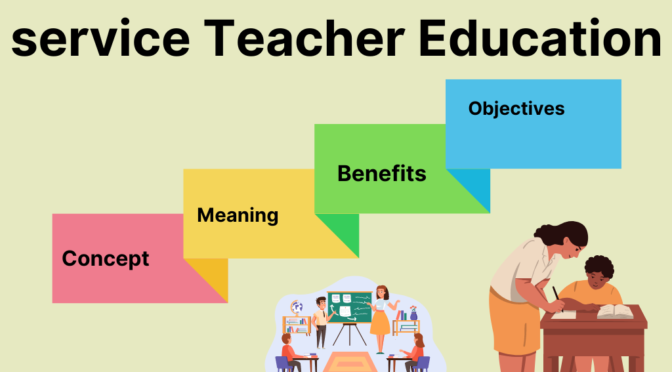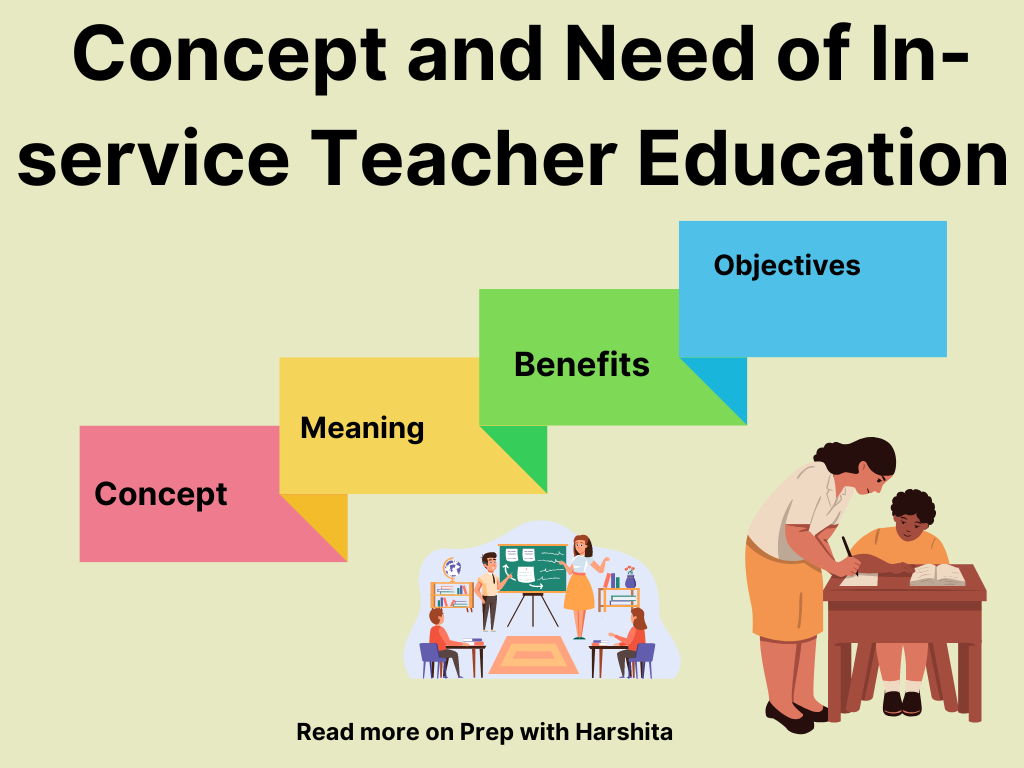Pre-service teacher education refers to the formal training and educational programs that individuals undergo before they begin their careers as licensed or certified teachers.
Concept of Pre-Service Teacher Education
- It is the phase of education that prospective teachers go through to acquire the necessary knowledge, skills, and competencies to become effective educators.
- Pre-service teacher education is typically completed at universities, colleges, or teacher training institutes and is designed to prepare individuals for the demands and responsibilities of the teaching profession.
- During pre-service teacher education, prospective teachers engage in a structured curriculum that covers various aspects of education, including pedagogy, subject knowledge, classroom management, assessment strategies, educational psychology, and teaching methods. The curriculum is designed to provide a comprehensive understanding of the principles, theories, and practices of education, as well as the specific knowledge and skills related to the subject(s) the prospective teachers will teach.
- In addition to theoretical knowledge, pre-service teacher education often includes practical components such as teaching practicums, internships, or student teaching placements. These practical experiences allow prospective teachers to apply their knowledge in real classroom settings, under the guidance and supervision of experienced educators. By actively engaging in teaching practice during pre-service education, prospective teachers gain valuable hands-on experience, develop instructional strategies, and acquire the necessary skills to effectively facilitate student learning.
Need for Pre-Service Teacher Education:
The need for pre-service teacher education arises from several key factors and considerations.
Here are some of the reasons why pre-service teacher education is essential:
- Professional Preparation: Pre-service teacher education provides aspiring teachers with the necessary knowledge, skills, and competencies to excel in their profession. It offers a structured and comprehensive curriculum that covers various aspects of education, including pedagogy, subject knowledge, classroom management, assessment strategies, and educational psychology. Through pre-service education, prospective teachers gain a solid foundation that prepares them to meet the demands and challenges of the teaching profession.
- Pedagogical Training: Pre-service education equips future teachers with pedagogical knowledge and teaching strategies that have been researched, tested, and proven effective. It introduces prospective teachers to different instructional methods, assessment techniques, and classroom management strategies that support student learning and engagement. By acquiring pedagogical training during pre-service education, teachers are better equipped to create effective and inclusive learning environments for their students.
- Subject Content Mastery: Pre-service teacher education programs focus on developing prospective teachers’ subject knowledge in the areas they intend to teach. This deep understanding of subject matter enables teachers to deliver accurate and meaningful instruction, respond to students’ questions, and provide appropriate guidance. By enhancing subject content mastery, pre-service education ensures that teachers are equipped to provide a solid foundation of knowledge to their students.
- Classroom Readiness: Pre-service teacher education includes practical experiences such as teaching practicums, internships, or student teaching placements. These experiences allow prospective teachers to gain firsthand experience in real classroom settings, under the guidance and supervision of experienced educators. By actively engaging in teaching practice during pre-service education, prospective teachers become familiar with the dynamics of the classroom, develop instructional strategies, manage student behavior, and build confidence in their abilities to effectively facilitate student learning.
- Understanding of Learner Diversity: Pre-service teacher education emphasizes the importance of recognizing and addressing learner diversity. Prospective teachers are introduced to concepts related to inclusive education, differentiated instruction, and supporting the needs of diverse learners, including students with disabilities, English language learners, or students from diverse cultural backgrounds. Pre-service education equips teachers with the knowledge and strategies to create inclusive and supportive learning environments where all students can thrive.
- Professional Ethics and Standards: Pre-service teacher education promotes the development of professional ethics, values, and standards in future teachers. It emphasizes the importance of ethical conduct, respecting student rights, maintaining professional relationships, and upholding the principles of fairness and equity. Pre-service education instills a sense of professional responsibility and prepares teachers to navigate ethical dilemmas and make informed decisions in their practice.
- Continuous Improvement and Lifelong Learning: Pre-service teacher education encourages prospective teachers to embrace the concept of lifelong learning and continuous professional development. It fosters a culture of reflection, self-assessment, and ongoing learning, where teachers are motivated to enhance their teaching practices, stay abreast of research and educational advancements, and continuously improve their instructional approaches throughout their careers.
In summary, pre-service teacher education is essential to provide aspiring teachers with the necessary knowledge, skills, and preparation to enter the teaching profession. It ensures that teachers are well-equipped to meet the diverse needs of students, create effective learning environments, and uphold professional ethics and standards. By investing in pre-service education, the quality of teaching and learning can be enhanced, leading to improved student outcomes and overall educational excellence.
Also Read: Concept and Need of In-service teacher education

Also Visit: Prep with Harshita

